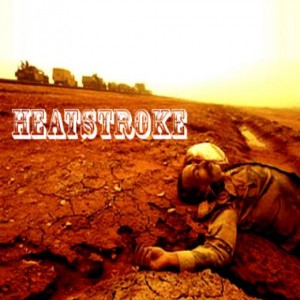A heat stroke is one of the major problems a person can suffer from heat. Children or adults who are not able to sweat like normal people often are prone to suffer from a heat stroke. Contributing factors of heatstroke involve alcohol abuse, dehydration, medications and cardiovascular diseases.

Causes
Your cooling mechanism is your ability to sweat. This is impaired by the following factors:
- Excessive humidity
- Intense heat
- Physical activity or heavy work in extremely hot areas
- Inadequate intake of fluids
A heat stroke may not sound like a major issue, but it can be life threatening if not treated with immediate care. A heat stroke takes place because of your body’s inability to generate its cooling mechanism such as temperature regulation and sweating. The major sign of a heatstroke is the high temperature of the body. The temperature is usually above 104 F or 40 C followed by other symptoms and signs such as confusion, dry and hot skin (it will be moist if the person was exercising), personality changes and coma.
Risk factors
- Dehydration
- Obesity
- Alcohol abuse
- Medications
- Impaired sweat glands
- Working for several hours in hot areas
Signs and symptoms
- Elevated skin temperature (above 104F)
- Rapid pulse
- High or low blood pressure
- Shallow or rapid breathing
- Inability to sweat
- Dizziness and light-headedness
- Personality changes: irritability and confusion
- Unconsciousness
- Nausea
- Headaches
- Fainting (often the initial sign in adults)
- Coma
Treatment
Remember that a heat stroke is a major emergency that can even result in coma, therefore, take the necessary precautions and follow these steps:
- Make sure you take the person to a cool or air-conditioned area, away from the sun.
- Call emergency medical help promptly.
- Remove any unnecessary clothing such as jackets and allow the person to rest on his side. Make sure his skin is exposed to as much air as possible.
- Cool the person’s body by fanning him with a newspaper or placing him near a fan. Spray cool water on his body in order to lower his temperature.
- Place ice packs on the armpits, neck and groin. These are the places where the large blood vessels lie close to the skin’s surface. Do NOT immerse the person’s body in cold water.
- Check the casualty’s rectal temperature and make sure it has reduced from 104 F. In an emergency situation like this, temperatures taken from the mouth or ear are often inaccurate.
- Provide the casualty with a cool, non-caffeine beverage or cool water with electrolytes (fruit or vegetable juice). Make sure he is sitting up straight while you help him drink the fluids.
- Do NOT give the casualty aspirin or similar medications as the body may counteract to the heatstroke differently, making matters worse.
- If the casualty is not breathing or is unconscious, begin rescue breathing till help arrives.
Where to learn more
Candidates that enrol into workplace approved standard and childcare first aid programs receive “hands on” training for recognition and management of victims with heat emergencies such as heat stroke. To register for a program near you visit our training locations page. We are partnered with providers throughout Canada including in Vancouver, Edmonton, Surrey, Calgary, Winnipeg, Regina, Saskatoon, Windsor, Ottawa, Toronto, Hamilton and Halifax.
Related Training Video on Heat Stroke
http://www.youtube.com/watch?v=njDvHx7XeB8